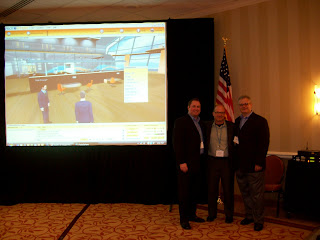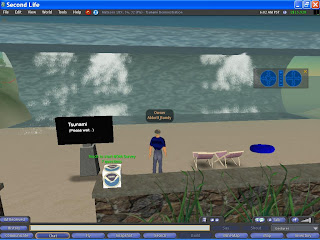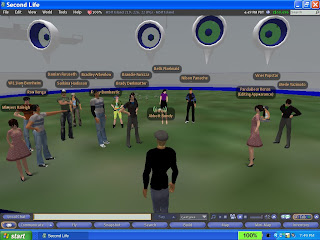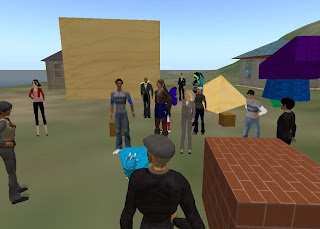Recently, I completed my first-ever sprint triathlon. in Avalon, NJ. It is called the
Islandman Triathalon. It is called a "sprint" for real triathlon pros because it is so short, they sprint it. For me, I just called it a triathlon.
I was able to complete the 1/4 mile swim, 12 mile bike and 5K beach run in 1:34. My wife is a great athlete and she joined me in the race. She was a little faster at 1:21, she finished number 17 in the women's master's group. My son even ran a kid's triathlon. The family had a great time competing in the event.
 Karl and Nancy before the start of the Islandman.
Karl and Nancy before the start of the Islandman. The neat thing about the event is the preparation that goes into running a triathlon and the different levels of mastery. Being my first "tri" I was really nervous about what to expect and about the transition between swimming and biking and between biking and the run. The "veterans" had it all worked out. They knew what they were doing. Me, as a newbie, lacked some really nice-to-have equipment but still managed to compete within the race and finish.
 One-third of the race is over, off to the bike.
One-third of the race is over, off to the bike. To run the tri, we trained for six weeks. We started slowly and then worked our way to full preparation. Sure, I could have used a few more weeks but doing a little bit every day was a helpful way to prepare my mind and body.
 Dismounting the bike to begin the run.
Dismounting the bike to begin the run. So what lessons can be drawn between training for a triathlon and creating effective learning?
First, doing a little bit each day can lead to big results. One day we would swim, one day lift weights, etc. The training eventually became more and more involved. We didn't start out doing all three sports, instead we built a foundation (base) and went from there. When creating a learning program, instead of doing an 8 hour mind dump onto the poor learners and expecting them to remember everything they have been taught, it is much better to provide a little bit of instruction on a regular basis and build knowledge over time. With technology tools, this is very possible.
 The run portion was through the sand, tough to move quickly in sand.
The run portion was through the sand, tough to move quickly in sand. Second, preparation is important but you need experience at "the real event" to solidify the learning. I looked at all the YouTube videos on Transitions.
Here is a sample. Spoke to people who have competed in tris and really did my homework but nothing can prepare you for race day except being at race day. In the learning and development field, we have a lot of tools for preparing people for the real work activity but when it comes right down to it, the person has to perform in the actual environment to actually understand the thousands of nuances involved. We, as learning and development professionals, can do a lot to prepare our learners but in the end, they need to experience the "real thing" and be prepared for chaos of the real job but realize that the preparation and their own acumen will get them through the experience. We are the trainers perparing them for "the big event."
Third, training for a tri needs to be difficult. I would not have had the confidence, motivation or belief that I could complete the triathlon without having had some grueling training sessions and even running a full version of the race before the actual race day. The difficult but rewarding practice enabled me to be successful on race day. Too often in learning events, we "dumb down" questions, scenarios and exercises so the learners don't get frustrated or think they are being "tricked" but, too often on the job and in real-life, situations happen that are tricky, difficult and frustrating. If we don't prepare them with the proper training for the difficult situations they will encounter, we are doing them a disservice. The practice triathlon was tough but it was critical to my success in the actual race. Our learning events need to be tough.
I'm looking forward to applying these rules to my development of learning events and to bettering my time next year!
 Felt good to be done!
Felt good to be done! __
Catalog of Recommended Books, Games and GadgetsRecommended Games and GadgetsRecommended BooksContent Guide









































